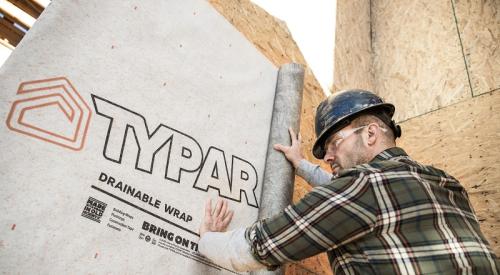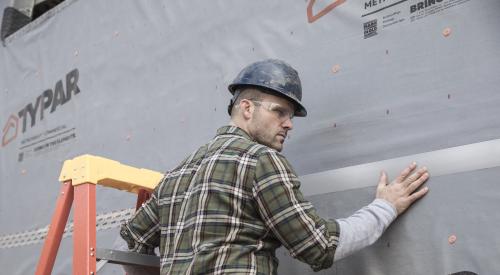Among the many different factors to consider when choosing a building wrap, geographic and climate considerations, specifically relating to annual rainfall, should always be top of mind. Not all building wrap materials perform at the same levels, especially when they’re being installed across a variety of different climates.
To help prevent issues like mold, drainage gaps can be installed behind the cladding to direct water down and out instead of trapping moisture inside the wall. The International Building Code (IBC) mandates an exterior wall assembly incorporate “a means for draining water that enters the assembly to the exterior.” As an additional rule of thumb, the Building Enclosure Moisture Management Institute (BEMMI) recommends any area receiving more than 20 inches of annual rainfall should incorporate enhanced drainage techniques, especially if using an absorptive cladding material. Areas receiving 40 inches or more should utilize rainscreen design regardless of the cladding material being used.
To this point, a growing number of states have added even more prescriptive measures to their codes. Oregon, for example, now requires the building envelope to consist of an exterior veneer, a water-resistive barrier (WRB, housewrap, building paper, etc.) and for the exterior veneer to be installed over a WRB that meets the 75% drainage efficiency requirement of ASTM E2273.
With these regulations in mind, building wrap manufacturers are beginning to evolve in order to address drainage needs. TYPAR® DrainableWrap™, for example, includes a layer of integrated polypropylene fibers, creating a highly effective drainage gap, allowing the wrap to drain significantly faster than conventional building wraps. Per ASTM E2273 testing, it exceeds minimum AC38 Code Requirement for Drainage Efficiency with a 94.8% drainage efficiency rate. When used as part of the TYPAR® Weather Protection System, TYPAR DrainableWrap is backed by the TYPAR® Lifetime Limited System Warranty, including labor and materials.
Geographic and climate considerations play a critical role in building wrap selection, but keep in mind that the orientation of the wall, amount of overhang, altitude, and even nearby trees can also have an impact on how much water intrusion can be expected and how likely the wall is to dry.
While we can’t completely stop water from getting into walls, advances in building wrap technology are a welcome way to help ensure potential damage from water intrusion is mitigated. And with a variety of drainable products to choose from, builders and contractors have many ways to keep walls dry in any climate or condition.












